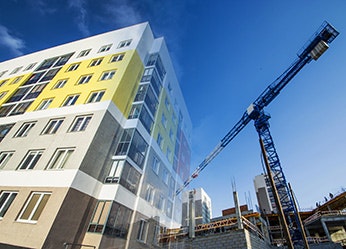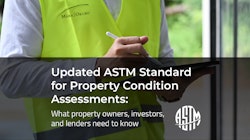

M|O Perspectives
Check back here for our thoughts on the latest developments in our industry.
Navigating Nuances of Student Housing Construction at Community Colleges
Feb 24, 2023
Many economically distressed students as well as educators looking for teaching jobs feel higher education is entirely out of reach in communities where the cost of housing has skyrocketed and is in limited supply. As more students look to community colleges for a more affordable and flexible early college experience, the need for higher education’s affordable housing has never been more pronounced.
But building affordable student housing brings its own set of challenges, especially in complicated markets. Typically, community college campuses and the architects/designers/ construction companies well-versed in academic buildings are used to the specific processes and considerations involved, such as the California Field Act which governs public K-12 and community college construction compliance; longevity and durability of structure and materials; and of course, dealing with stringent Division of State Architect (DSA) regulatory oversight and public procurement methods.
However, even for architect/construction firms seasoned in the higher education space, housing (for students and staff) at community colleges brings very different needs for affordable housing products. Firms used to designing student housing at large-budget, four-year universities often face a steep learning curve when working on community college multifamily/affordable housing projects.
Challenges of affordable student housing
First, one of the biggest differences is that builders must account for construction type. Community college academic buildings tend to be constructed from non-combustible materials like steel and concrete. However, most affordable housing uses Type V wood framing over a Type I concrete podium construction for fire separation between lower-level parking/ commercial and residential occupancies. Affordable housing also implements processes and materials like vinyl windows and stucco to keep costs down. And a lot of mechanical, plumbing, and electrical systems are not engineered during design but, instead, are design-built during the construction phase with some or minimal coordination between disciplines. All of these factors will necessitate a significant change in approach when the DSA is involved and the Field Act is imposed. However, this is something an affordable housing builder will not be accustomed to, and it will severely impact the cost of construction.
Second, while a four-year university is operationally and programmatically able to support and provide services for on campus residents 24/7, community colleges have historically not had to provide the same. Many four-year universities provide in-building resident advisors to provide a supportive and safe environment for student residents. An on-campus affordable student housing project would require building management and student resident services on a 24/7 basis. There are other services including campus security, food service, healthcare, recreation, and other services/amenities that are needed for student residents that currently do not exist on community college campuses.
A third consideration is that most community colleges have a single electric meter serving the entire campus. When building repair or maintenance work is required on campus, the power is shut off for the entire campus. With student housing on campus, this practice would have to be reevaluated and would require an engineered change to power distribution on a campus.
Fourth, contractors who are experienced with affordable housing construction would likely not be familiar with the way DSA permits or inspects a building or the use of Inspectors of Records (IOR) in the field. The speed that general contractors are accustomed to with affordable housing projects will not be compatible with a DSA-regulated construction project. Attempting to push through construction sequences without prior inspection by the DSA or IOR will likely result in multiple costly reworking of an installed assembly. There is a significant learning curve.
A different approach: bridging disparate paths
As the typical affordable housing/multifamily construction process doesn’t deal with the DSA’s more stringent requirements, like higher education construction does, the intersection of higher education and affordable/multifamily housing truly requires different thinking and approaches for both design and construction.
Higher education designers and contractors used to working with the DSA, may not necessarily understand the construction type or code requirements for multifamily/affordable housing. An experienced higher education architect who is used to the unlimited area and building heights afforded by Type I construction would not necessarily share the experience of a multifamily architect who knows how to design a Type V wood frame building and maximize the size and height of the building using fire walls/area separation walls.
Conversely, a design company that knows affordable housing may not know how to handle the DSA. The DSA would likely scrutinize and require more restrictive requirements that an affordable housing designer or general contractor would likely have difficulty understanding or implementing. There are also other factors that come up like additional costs related to bracing building assemblies that normally would not be braced in a non-DSA residential building and more restrictive accessibility and overall structural requirements.
Trying to procure the services of designers or builders that have experience that bridges the nuances of both affordable housing and the DSA’s processes might be difficult and could potentially reduce the pool of available consultants. College districts should consider rethinking the development of an RFQ/ RFP process that balances the need for the relevant experience, while allowing for flexibility to work with teams that are a good fit.
Six crucial questions when engaging an advisor
The best solution may be hiring an advisory team that can help navigate these disparate paths. An owner’s representation project or construction management firm can ensure that both the architect and builder understand the complex issues and remain on track. Here are some questions community colleges will want to ask when evaluating an advisor partner in these types of projects:
1/ Do you have experience with working on student housing projects with non-profit affordable and supportive housing developers, community colleges, and four-year universities?
2/ Can you provide examples of how you collaborate with clients to identify and resolve design issues?
3/ How do you save your clients money and ensure their projects stay on budget even with known material and logistic shortages?
4/ What trends are currently impacting construction, and how would you advise that a team works around them?
5/ What tools do you use to measure performance and negotiate revenue sharing on affordable housing projects?
6/ Are you familiar with the various project delivery methods that could be utilized by community college student housing projects including design-build, progressive design-build, private public partnerships, and traditional design-bid-build?
In these volatile market conditions, it’s important that owners have access to good data and advice to better navigate their capital projects. With all the challenges that come with affordable housing, having an expert third-party on your side could mean the difference between success and failure.
As we at Marx|Okubo have experience and expertise across millions of square feet in education project types, plus affordable and multifamily housing, we have a unique perspective working on the intersection of projects like this. If you need help navigating affordable student housing in the community college realm, we understand the issues and can meet with design team and help guide the steps, process, and decision-making, and ultimately help find solutions to meet requirements. Please contact Gerard_Lee@marxokubo.com with any questions.

What we do.
- Owner's Representation
- Property Condition Assessment
- Project Management
- Constructability Reviews
- Repair | Reconstruction
- Facility Condition Assessment
- Construction Loan Monitoring
- Accessibility
- Building Enclosure
- Fire | Life Safety
- Mechanical | Electrical | Plumbing
- ESG | Sustainability & Resiliency
- Structural Engineering
- ASAP® - Automated Structure Alert Program
Marx|Okubo is a national architecture/engineering/construction consulting firm that works with real estate owners, investors and lenders—at every point of the property lifecycle—to evaluate their building projects, solve complex challenges and implement tailored solutions. We help clients understand their projects’ complexities, so they can make more informed decisions and, ultimately, mitigate their risk.




